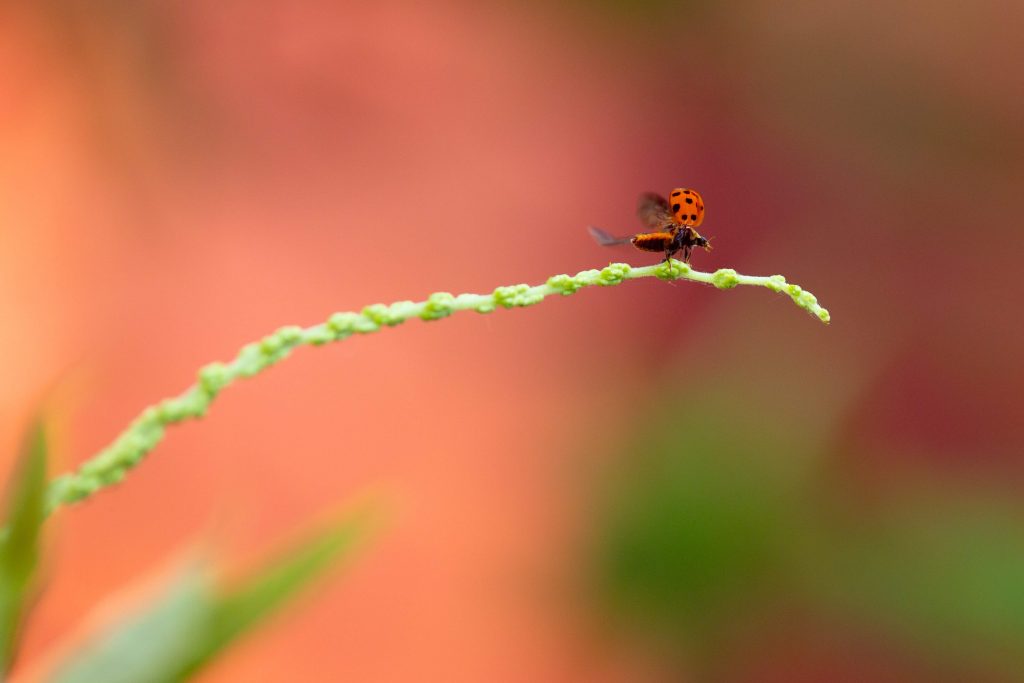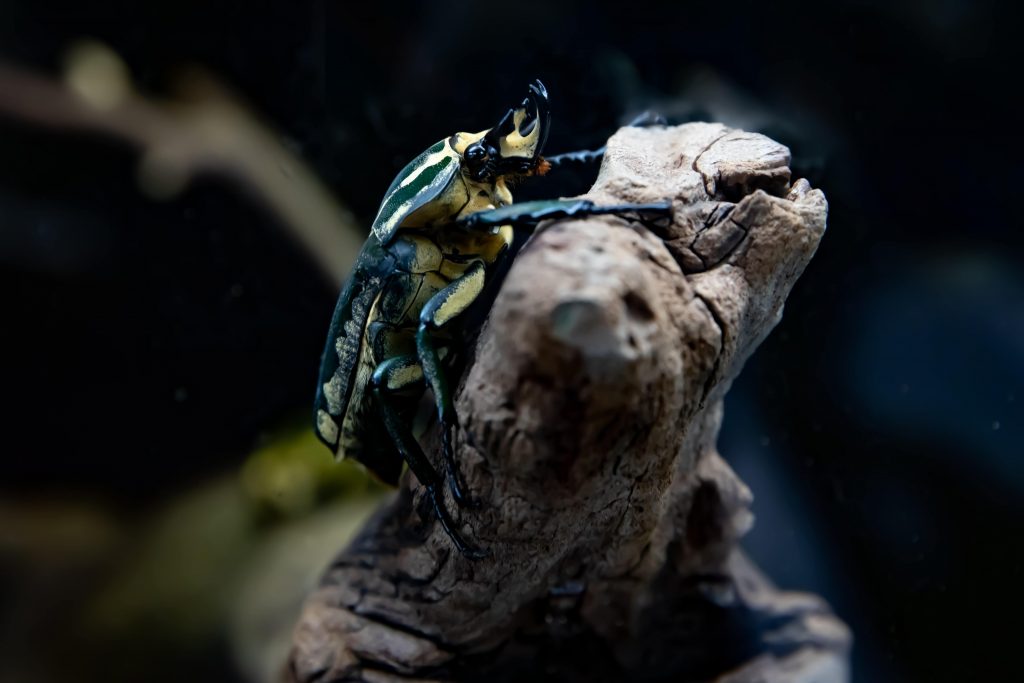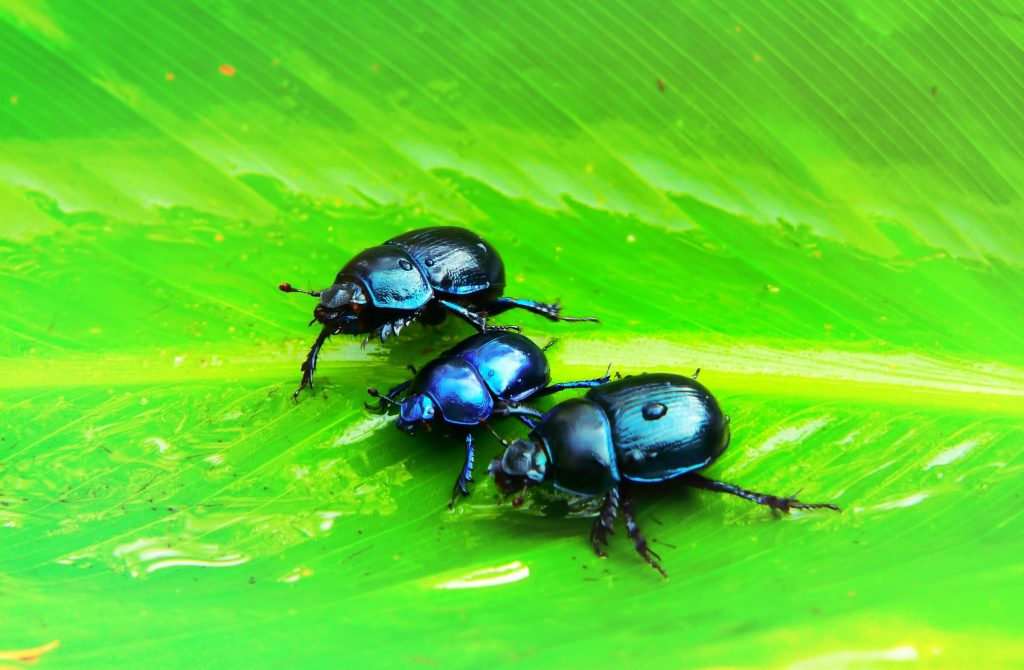There are a number of interesting facts about beetles to learn. Whether you’re a beetle lover who spends time studying about them, or a beetle collector, this article can add something to your repertoire.

Beetles are a kind of insect that belongs to the Coleoptera order of insects.
The term “Coleoptera” comes from the Greek words Koleos, which means “sheath,” and pteron, which means “wing,” thus “sheathed wing.”
There are over 350,000 species of beetles, with new species being found on a regular basis. They account for roughly 40% of all insect species and 25% of all animals identified so far.
Most beetles live for just a year. Some, especially the larger ones, will live for more than a year after hatching in the summer, spending a few months to a year or more as a larva and pupa, and then emerging as an adult to reproduce.
Almost every beetle can fly, but they prefer to stay on the ground or in low vegetation. They have colonized nearly every ecosystem and explore many varieties of food sources.
Beetles exist as plant-feeders, scavengers, predators, and parasites. Certain species’ larvae and, in some cases, adults may be major pests. In the garden, some insects, such as ladybirds, are friends and eat other insects that might be a threat to plants.
9 Interesting Facts About Beetles
There’s so much to learn about beetles. The sections to follow highlight some interesting facts about beetles that you probably didn’t know.
1. Body Armor is Used by the Majority of Adult Beetles
A characteristic that distinguishes beetles is their strengthened forewings, which act as an armor or shield to secure the more fragile flight wings and tender abdomen underneath.
While beetles fly, the defensive wing covers (known as elytra) are held out to the edges, enabling the hindwings to travel easily, and holding them airborne.

2. Beetles Have Various Sizes
Beetles vary in scale, from almost miniature to nearly enormous, as one would predict from such a large collection of insects. The featherwing beetle (family Ptiliidae) is the smallest beetle, with most measuring less than 1 millimeter in size.
The fringed ant beetle, Nanosella fungi, is the smallest of them all, measuring just 0.25 mm in length and weighing only 0.4 milligrams.
The Goliath beetle (Goliathus goliathus) is on the opposite end of the scale, weighing in at 100 grams. South America is home to the world’s largest (and, perhaps longest) insect. Titanus giganteus, as its name suggests, can expand itself up to 20 centimeters long.
Are you interested in learning about beetles of different colors? Check out this article to learn about a list of green metallic beetles or this one on iridescent beetles.
3. Beetles Have a Significant Economic Impact
Only a small percentage of the total insect species may be classified as pests. Most beetles aren’t problematic. However, since too many are phytophagous, the Coleoptera species contains several economically important pests.
Millions of trees are destroyed each year by bark beetles (such as the mountain pine beetle) and woodborers (like the exotic emerald ash borer).
Agricultural pests such as the western corn rootworm and the Colorado potato beetle cost farmers millions of dollars in pesticides and other protective measures.
Pests such as the Khapra beetle feed on stored seeds, resulting in higher economic losses, even after the harvest is over. The money invested in Japanese beetle pheromone traps by gardeners (some might claim money lost on pheromone traps) is bigger than the GDP of some modest countries
4. Food is Chewed by Adult Beetles
While this can appear self-evident, not all insects chew their food. Butterflies, for example, drink liquid nectar from a proboscis, a built-in straw. Mandibulate mouthparts, designed specifically for chewing, are a feature shared by all adult beetles and most beetle larvae.
The majority of beetles consume trees, although others (such as ladybugs) seek and eat smaller insects. Carrion feeding beetles gnaw on skin with their powerful jaws.
A couple of them also eat mushrooms. Beetles chew their meal thoroughly before consuming it, no matter what they’re eating. It’s assumed that the common name beetle comes from the Old English word bitela, which means “little biter.”
5. Beetles Can be Found in Nearly Any Habitat
Beetles can be found nearly everywhere on the globe, from pole to pole. From trees to grasslands, deserts to tundras, and coasts to mountaintops, they live in both land and aquatic environments. They’ve also been found on several of the world’s most isolated islands.
6. Beetles Can Shine in The Dark
Certain beetle families have species that emit light. Their bioluminescence is caused by a chemical reaction involving the luciferase enzyme. Through a bright organ on the belly, fireflies (family Lampyridae) flashlight to lure prospective partners.
Light organs extend along the sides of the thoracic and abdominal parts in glowworms (family Phengodidae), like tiny flickering windows on a railroad boxcar (and thus their nickname, railroad worms).
Glowworms occasionally have a second light organ on their heads that glow a strong red light. Tropical click beetles (family Elateridae) have two oval light organs on the thorax and a third light organ on the abdomen that emits light.
7. Beetles Account for One Out of Every Five Animals
Beetles are by far the most diverse community of living organisms known to science. And even when plants are included in the list, beetles account for one out of every five recognized species.
About 400,000 species of beetles have been identified by scientists, and much more certainly still to be found. According to some studies, the world’s beetle species is likely to reach 1.5 million. The Coleoptera order is the most diverse in the animal kingdom.

8. Beetles are Very Important to Our Planet
Dung beetles, specifically, are a real natural recycler. This is very important to our planet in many ecosystems because they feed on animal droppings, recycle waste material, and speed up the circulation of nutrients back into the food chain.
As recyclers, they do an indispensable job for our planet. Without organisms breaking down dead organic material and recycling nutrients in the wild, as well as in gardens and on farms, the planet would soon be piled deep with the waste products of its inhabitants, and potential spread of diseases would be unavoidable.
9. Some Beetles Pollinate Flowers
Beetles were one of the first insects to visit flowers, and they continue to play an important role in pollination today
They’re particularly valuable pollinators for old-growth trees like magnolias and spicebush. As opposed to bees or hummingbirds, Beetles are called “dirty” pollinators because they consume flower petals and defecate on flowers.
As a result, they’ve gained the nickname of “mess and soil” pollinators. Beetle pollination is quite usual in tropical and arid areas, but several common temperate ornamental plants still use pollinating beetles.





